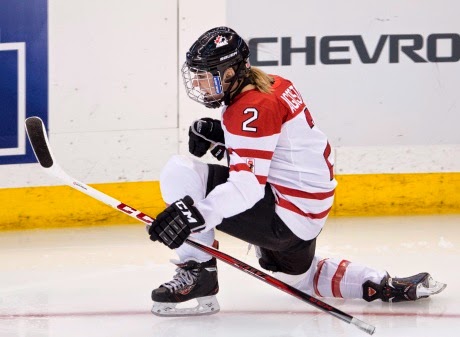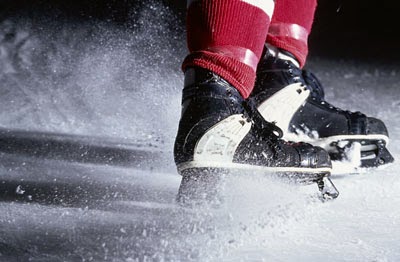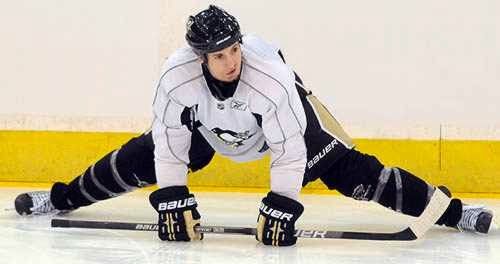It’s that time of year to begin thinking about and preparing for hockey season and avoiding hockey injuries.
If you don’t take the time to properly prepare the body for the stress placed on it while playing hockey, then you are setting yourself up for muscle aches and soreness and also pre-disposing the body to hockey injuries.
Your preparation should include the following:
1. Booking a biomechanical assessment with Dr. Barbara Rodwin
2. Preparing yourself through stretching and conditioning
3. Preparing your hockey gear
Ask us at Back to Health how we can help your pre-hockey season!
Is it Normal for my Feet to Hurt after Skating?
When you first skate in your new skates, yes, it is normal for there to be a little discomfort. It is normal to get the odd blister, or a bit of a pain. This discomfort should only affect you the first few times you use your skates. This is the normal process of breaking in a new pair of skates. After your skates are broken in you should be able to skate in them without any pain or blisters.
What happens if your feet hurt every time you skate in them?
If you’ve skated 10+ times and your skates still hurt your feet then there is a problem. Your skates may not fit you properly, or you may have problematic feet that need special attention. You can customize your skates by getting custom orthotics or off the shelf insoles for additional support, or by taking them to a pro shop to get them “punched”. Let’s say you have extra wide ankles, you can get the sides of your skates punched to give you some more room.
Some people only have sore feet with playing hockey and are fine with other sports. In this case we can make a custom orthotic designed specifically for the skate. The make and model is taken into consideration in their design. These are the same skate orthotics that NHL players use!!
If your feet are hurting with skating, book an appointment with your chiropractor to evaluate ways they can help.
Dynamic Stretching and Warm Up:
Dynamic stretching and warm up refers to a series of exercises geared towards getting the body moving in ways comparable with the demands of a specific sport. Body temperature rises as heart rate is increased allowing the major muscle groups to feel more “loose”, functional, and ready for an intense workout. The primary goals behind performing a proper dynamic warm-up are to improve performance and reduce the risk of injury. This is accomplished by: increasing the core temperature and joint range of motion, activating stabilizers, proprioceptors, and the central nervous system, increasing mental awareness and focus, and improving hockey related movement skills.
INTERESTED IN DYNAMIC STRETCHES, STATIC STRETCHES, PRE-SEASON CONDITIONING, OR STREGTHENING: ASK DR. BARBARA RODWIN
Hockey injuries occur more commonly in games rather than practices. Hockey injuries also more commonly occur during the final five minutes of a period, and 42% of injuries occur in the third period of a game, usually exhibition and preseason games. This is likely due to the level of competition involved and player fatigue.
Head and face injuries: 42% of hockey injuries
Upper body injuries: 27% of hockey injuries
Lower body injuries: 31% of hockey injuries
Any type of hockey injury can be treated by the health care providers at Back to Health!
Think about your body; it is the most important piece of equipment you have!
Concussions and Hockey
If you have sustained a concussion while playing hockey, book an appointment with Dr. Barbara Rodwin as she is trained to properly evaluate and treat you. Dr. Rodwin is trained in the C.A.T.S. (Cranial adjusting turner style) method of concussion treatment, and has been practising this treatment for 2.5 years.
Cranial Adjusting Turner Style (C.A.T.S) is a scientifically and neurologically based technique designed to address the cranial misalignments caused by an impact to the head. C.A.T.S practitioners are able to detect and correct any cranial misalignments. They function under the basic principle that if a cranial bone is out of place; put it back into place and restore its function. Certain injuries to the skull can cause the bones to be knocked out of their proper alignment. These misalignments can interfere with an individual’s nerve, fluid surrounding the brain and blood supply to the brain. A misaligned skull can also exert extra pressure on the brain which interferes with the brain’s nutrient and oxygen supply, where pain and altered functions can be a direct result of the added intra-cranial pressure.
Dr. Rodwin has had excellent success using the C.A.T.S. technique in treating patients for concussions. The sooner you seek out treatment, the sooner you will be back playing!




